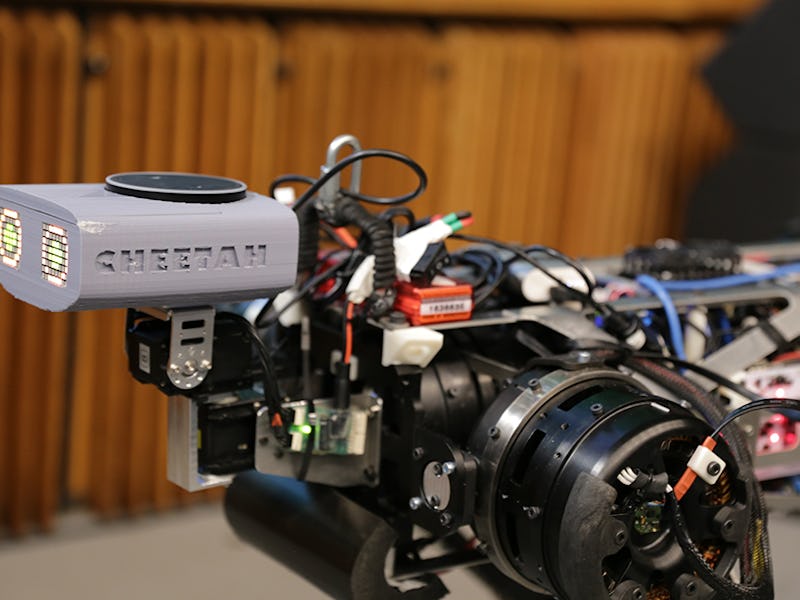The four-legged robot Cheetah 3 is getting ready to leave its lab at the Massachusetts Institute of Technology and start helping humanity. The robot’s designers unveiled on Monday the latest version of the robot. The goal is for it to begin performing search and rescue missions within the next five years.
One of its first destinations could be the Fukushima nuclear power plant. Suffering critical damage from the tsunami that hit Japan in 2011, the plant released radioactive material into the surrounding area that still requires constant monitoring six years later. Enter the Cheetah 3, which can explore terrain that is too dangerous for humans. The robots would be able to detect emergency situations and notify human operators or respond accordingly.
MIT's new Cheetah 3 robot at its public demonstration
“I’ve been fascinated by developing legged machines,” lead researcher Sang-bae Kim told TechCrunch. Kim and his team unveiled the latest version of the robot at the TechCrunch Sessions: Robotics in Cambridge, Massachusetts. Because it has legs instead of wheels, Cheetah 3 is better equipped than conventional robots to traverse rubble, steps, and other common stumbling blocks in the environment.
The internet is rife with funny videos of robots tripping over their own feet or collapsing to the ground, but the team from MIT promises that Cheetah 3 will be able to balance, even while using one of its four legs to open doors or push obstacles aside.
While this newest version of the Cheetah robot is still working on making its way around MIT’s campus, previous iterations have achieved speeds of up to 30 miles per hour and been able to jump over small hurdles.
As CBS reports, Cheetah 3 is only ninety pounds, it requires less energy than a conventional microwave oven, and its legs generate as much power as a car. Cheetah 3 moves more smoothly than any other robot of its type thanks to its twelve joints.
Cheetah 3 is controlled by electric motors, unlike the pneumatic-powered Big Dog made by Boston Dynamics, a company known for humanoid and quadruped robots that received the same DARPA funding as the MIT Biomimetics lab that created Cheetah.
Boston Dynamics' Spot
While Spot and other Boston Dynamics robots are famous for their balance, they are less maneuverable than the new Cheetah and can only last for 45 minutes on a single battery charge, making them less suited for the kind of in-depth excursions the MIT researchers envision for Cheetah 3.
